Draft Data Deep Dive, Part II: Athletic Wings and Second-Round Gems for the Lakers
Let’s talk data, models, and other insights on athletic wings, bigs, and low-risk gambles
This is the second part of the Draft Data Deep Dive series, where I explore advanced NCAA data and feature draft model and other insights from data scientist Nick Kalinowski. In Part I, we focused on Cooper Flagg — the generational prospect the Mavericks are widely expected to select with the number one pick, barring any major surprises.
In this second part, the spotlight shifts to the other end of the draft: the second round, where the Lakers currently hold the 55th pick. In my other offseason series, NBA Trends, I wrote about the league’s shift toward speed, athleticism, and aggressive play. The playoffs made it clear that the Lakers’ biggest deficit — beyond the obvious hole at center — is a lack of athleticism across the rotation. So in this deep-dive, we’ll focus on two archetypes that could help fix that: athletic wing defenders and rim-running bigs who might be available late in the draft.
Many of these prospects will likely be off the board before the 55th pick, but the Lakers should be opportunistic and look to move up or add another second-round selection. The same applies to the Mavericks, who could use a strong on-ball defender to round out their roster. And as you'll see in the comparisons below, many of the athletic, high-motor, ball-pressure players fans are hoping for have historically been found in the later stages of the draft.
Today’s highlights:
How well do 'athletic' defensive stats translate from college to the NBA? 📈
Athletic wing defense: second-round options
A very intriguing Combine Score and athletic comparisons for Dalton Knecht
Athletic rim-rolling bigs: second-round options
Best front offices at finding hidden draft gems
1-How well do 'athletic' defensive stats translate from college to the NBA? 📈
In Part I, I mentioned how I’ve used certain stats that reflect athleticism and defensive activity — like block rate, steal rate, and offensive rebound rate — to evaluate draft prospects in the past. In 2023, when the Mavericks drafted Dereck Lively II and Olivier-Maxence Prosper, both stood out in this area, but in very different ways. Lively had strong numbers across the board, especially in blocks and offensive rebounds, which supported the optimism around his defensive impact. O-Max, on the other hand, posted low steal and especially low block rates, which made me much more skeptical than most about his long-term defensive upside.
Those early trends carried into their first Summer League performances, and around that time I started digging deeper into how well certain stats actually translate from college or the G League into the NBA. In the summer of 2023, I built a simple model using 10 years of NCAA and Summer League data. What I found was that the more athletic indicators — block rate, offensive rebound rate, and steal rate — were among the most predictive of NBA performance. These metrics showed up on the far left side of the chart below, meaning they translate the best.
And while we don’t have Summer League data yet for the 2025 Draft class (represented by the red line in the chart), my 2023 model showed that Summer League adds a valuable extra sample to the projection, but it’s not essential. The overall results remained very similar to the version based on NCAA data alone (shown by the blue line).
Why am I sharing this again? Because I used the same approach and key stats (block rate, steal rate, and offensive rebound rate) to build comparisons for the players Nick highlighted when I asked about prospects who fit the exceptional athlete archetype. We also took it a step further by including Nick’s Combine Score metric, which adds another valuable layer of insight into each player’s athletic profile and physical tools.
2-Athletic wing defense: second-round options
In this section, I’ll combine two things. First, a quick Q&A with Nick focused on second-round wing prospects. Then, I’ll share a comparison table with NCAA advanced stats and Nick’s Combine Score data, matching those prospects with ideal archetypes — players like Herb Jones, Toumani Camara, and Luguentz Dort — or familiar names for Lakers fans such as Max Christie, Dorian Finney-Smith, Jarred Vanderbilt, Jordan Goodwin, and Josh Hart.
As you’ll see in the comparison table, all of the players mentioned above were drafted 30th or later, with three going undrafted. Every player Nick pointed out, and most of my comps, spent at least three years in college. That often means they’re more NBA-ready and able to contribute sooner. The Lakers have found these kinds of gems before, and hitting on one again this year would be a big boost for a team with limited assets.
Q: The Lakers currently hold the 55th pick, if they don’t move up in the second round. They need athletes, length, and point-of-attack defense. Do you see any players — or does your model project any — that you’d take a chance on at the end of the draft?
Nick: With NIL becoming such an important factor in the draft process, I expect the second round to become even more barren than usual. That being said, Jahmai Mashack is a player who I think fits all of the criteria you outlined as needs for the Lakers. He tested extremely well at the G League Elite Camp, measuring 6'3" with a +5 wingspan, and was a lockdown defender for Tennessee in the toughest conference in the country. Given LA’s success with Jordan Goodwin in a limited sample, Mashack could be a low-cost perimeter defense option worth targeting late in the draft. Micah Peavy from Georgetown is another player who fits that mold.
Q: Do you see any players who fit that profile and are likely to go earlier in the second round — players you’re high on and think the Lakers should consider moving up for?
Nick: It’s tough, because a few players projected in the late first to early second round range are still undecided about whether to return to school. Miles Byrd (EDIT: draft expert Jonathan Givony described him as one of the best defensive playmakers in college basketball) was arguably the best point-of-attack defender in college basketball last season, and unlike Mashack or Peavy, he’s also a consistent perimeter threat. He continued to rack up steals and blocks during the combine scrimmages and definitely saw his stock rise over the week. Cedric Coward (EDIT: Cedric Coward forgoes Duke to remain in the NBA Draft), currently committed to Duke but also going through the draft process, measured as one of the most athletic wings in combine history (Combine Score above 95) and has seen his draft outlook skyrocket from relatively unknown to the 20–30 range.
3–A very intriguing Combine Score and athletic comparisons for Dalton Knecht
If you're wondering why Dalton Knecht, a player known more for his scoring and shooting, shows up in my comparison table for athletic wing defenders, there are two reasons. First, he's the Lakers' most recent draft pick and fits the mold of an older prospect who spent multiple seasons in college.
Here’s how Nick answered when I asked how his model projected Knecht before last year’s draft, and how he views one of the Lakers’ best young assets today.
Nick: Knecht graded out as the 7th-best prospect coming from the NCAA to the NBA last season in my model, which valued his diverse scoring profile and offensive dominance in the SEC, the most competitive conference in college basketball. At times, he looked like he was living up to that potential, but he struggled with consistent minutes, especially after the Mark Williams trade fell through. I think he’ll settle into a steady role as a volume scorer off the bench — someone who can give you a few buckets when needed but isn’t a strong enough defender to contribute much beyond that. It will also be difficult for him to develop further given his age (he’ll be 24 at the start of next season).
However, the second thing that jumped out to me when looking at Knecht’s data in Nick’s Combine database was his absurdly high score. Knecht posted a 92.6 Combine Score as a small forward — for comparison, Cooper Flagg ranks at 89.2 at the same position.
When I followed up with Nick about why Knecht ranked so high in the Combine Score, he explained that Knecht recorded a four-inch higher vertical jump than Flagg and posted agility numbers that were off the charts.
Now, I’m not saying Knecht is the overall athletic specimen that Flagg is. But his Combine Score, along with some flashes he showed during his rookie season, should be enough reason to hold off on giving up on him as a potential average, or even above average defender.
4-Athletic rim-rolling bigs: second-round options
Another clear need for the Lakers is an athletic, rim-rolling big who can give Luka Dončić a vertical threat in the pick-and-roll. So I asked Nick: who are the most interesting prospects that fit that mold and could be available later in the draft?
Nick: The easy answer to this is Yanic Konan Niederhauser out of Penn State. The Swiss big man tested as the most athletic center in Combine history, putting up a 37.5-inch max vertical at 7'0" tall in shoes. Depending on where teams view his potential, he could be available in the mid-to-late second round for the Lakers to snatch up as that rim rocker for Luka to toss lobs to in the pick-and-roll. Mouhamed Faye, a big man currently playing for Reggia in Italy, has received mid-to-late second-round buzz in many mock drafts and could also fill this role adequately.
Givony praised Niederhauser’s physical tools on display at the NBA Draft Combine and the Excel Pro Day. Interestingly, the two player comparisons listed for the Swiss big man on NBADraft.net are both names Lakers fans will recognize: Jaxson Hayes and Daniel Gafford. Another comparison I included in my table, for obvious reasons, is Christian Koloko.
5-Best front offices at finding hidden draft gems
I’ll wrap up this two-part Draft series with a great question from one of my loyal readers — and Nick’s answer.
Q (fom a digginbasketball reader): Which teams are best at identifying and developing talent outside the lottery? What kinds of metrics or models are they using to evaluate prospects? And how much of a role does traditional scouting still play in the draft process?
Nick: The two best teams at finding talent outside of the lottery are easily Memphis and Golden State. The Warriors in particular have a rotation littered with players they drafted in the late first round or even in the second, notably Brandin Podziemski, Trayce Jackson-Davis, Kevon Looney, Quentin Post, Gui Santos, and of course, Draymond Green. Memphis follows close behind, as their rotation includes Desmond Bane, Brandon Clarke, Santi Aldama, Jaylen Wells, GG Jackson, and Vince Williams Jr. These two organizations, while being heavily analytical, also have some of the most talented scouting departments in the NBA. The Grizzlies have made a specific effort to hire amateur scouts from “Draft Twitter,” to the point where a majority of their front office consists of former hobbyists who published their work online. Analytics departments generally remain smaller than scouting ones, although this is changing as time goes on. Scouting will never fall completely by the wayside, but building effective models can have just as important an effect on a team’s draft decisions.
Max Christie is a recent example of a second-round success story found by Rob Pelinka and the Lakers front office. With the pressure to build around Luka Dončić, landing another player like that in this year’s draft could be a key building block. It would mark an ideal start to what will be a crucial summer of roster transformation and long-term team building.





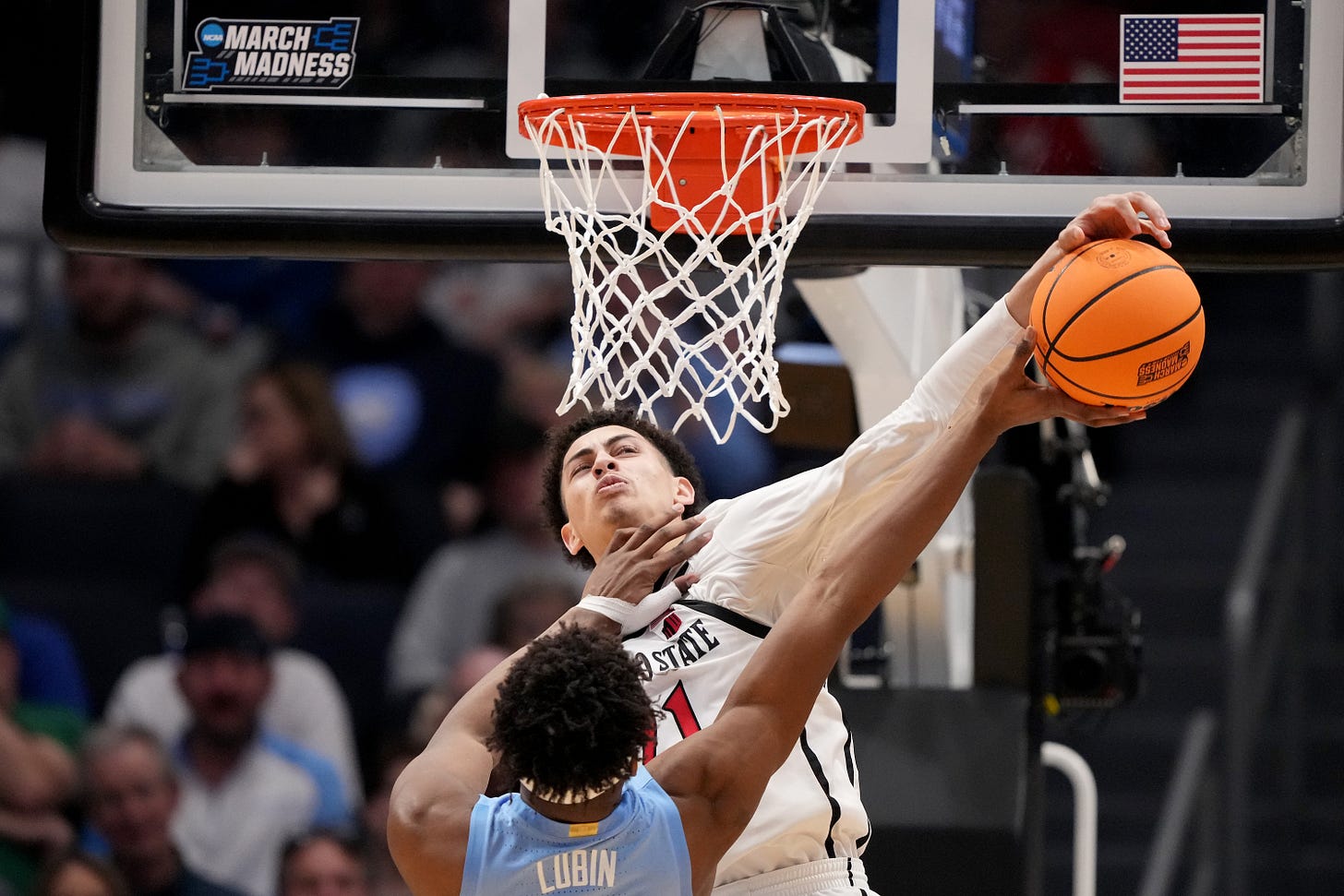
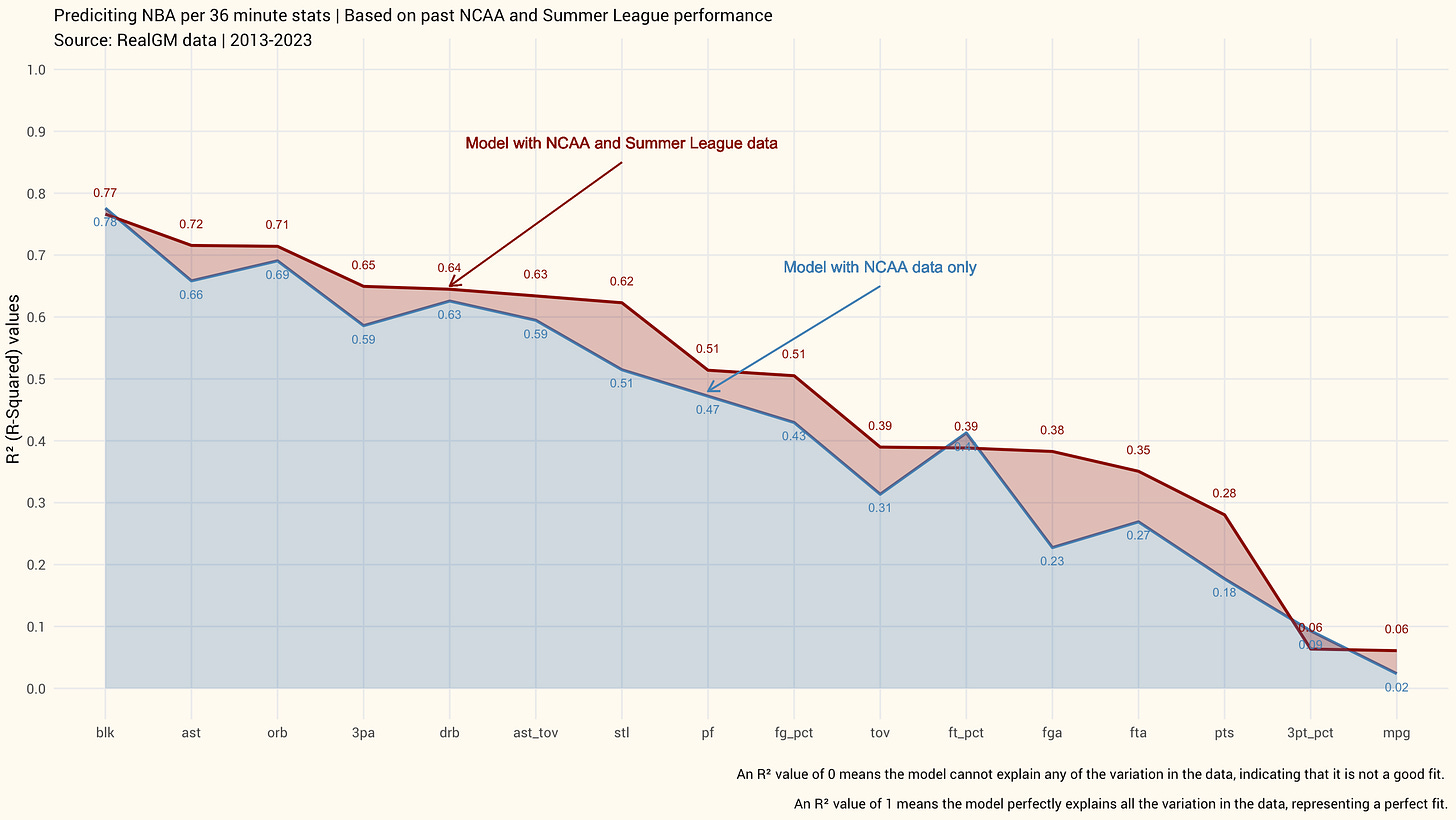
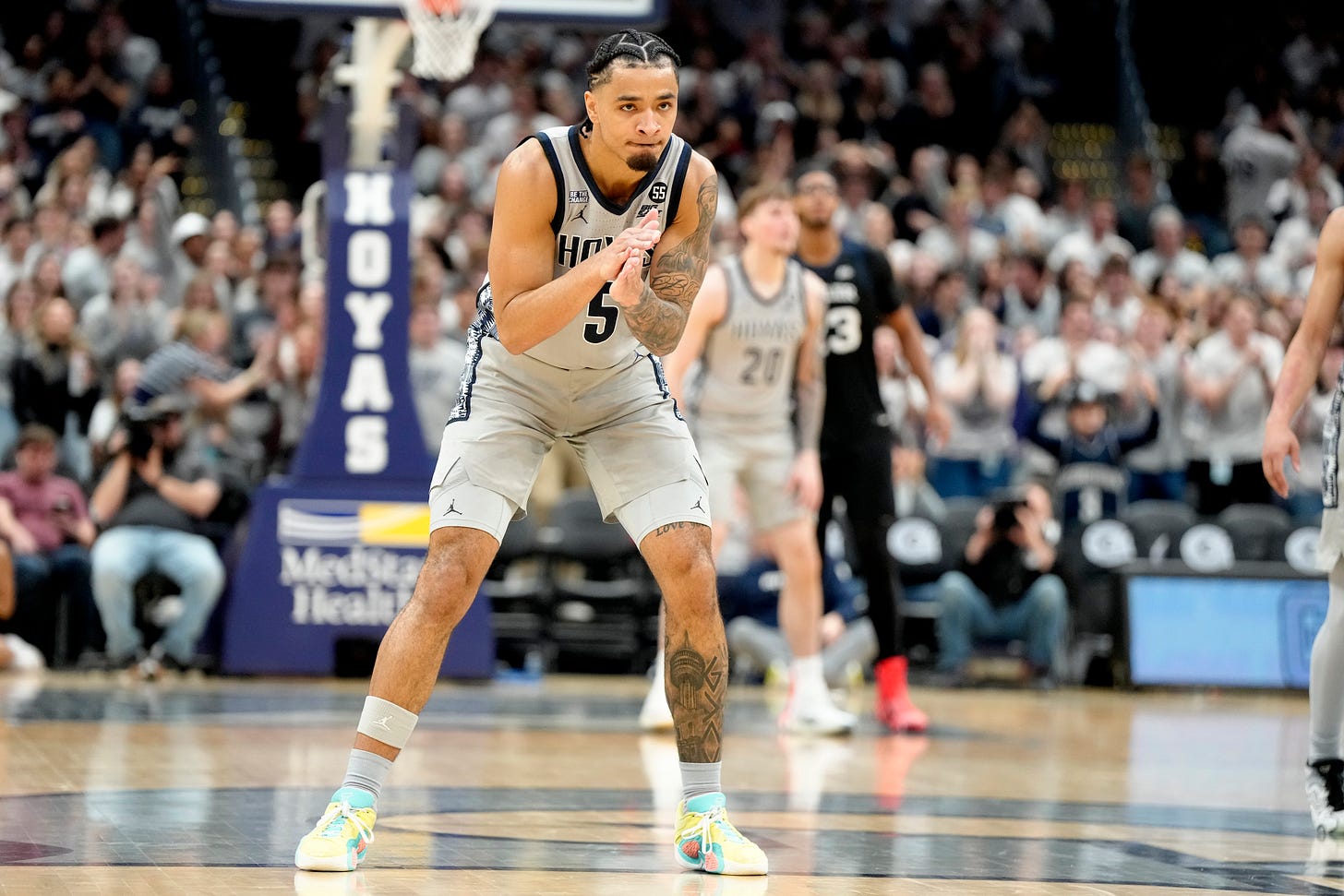
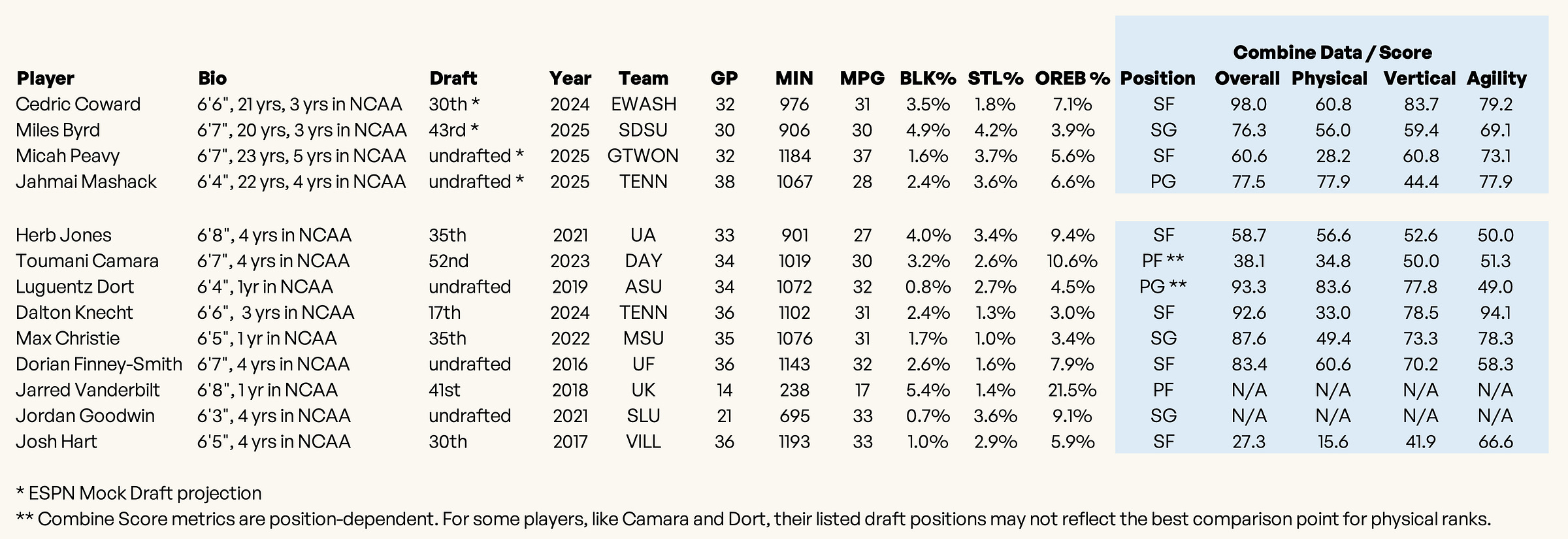
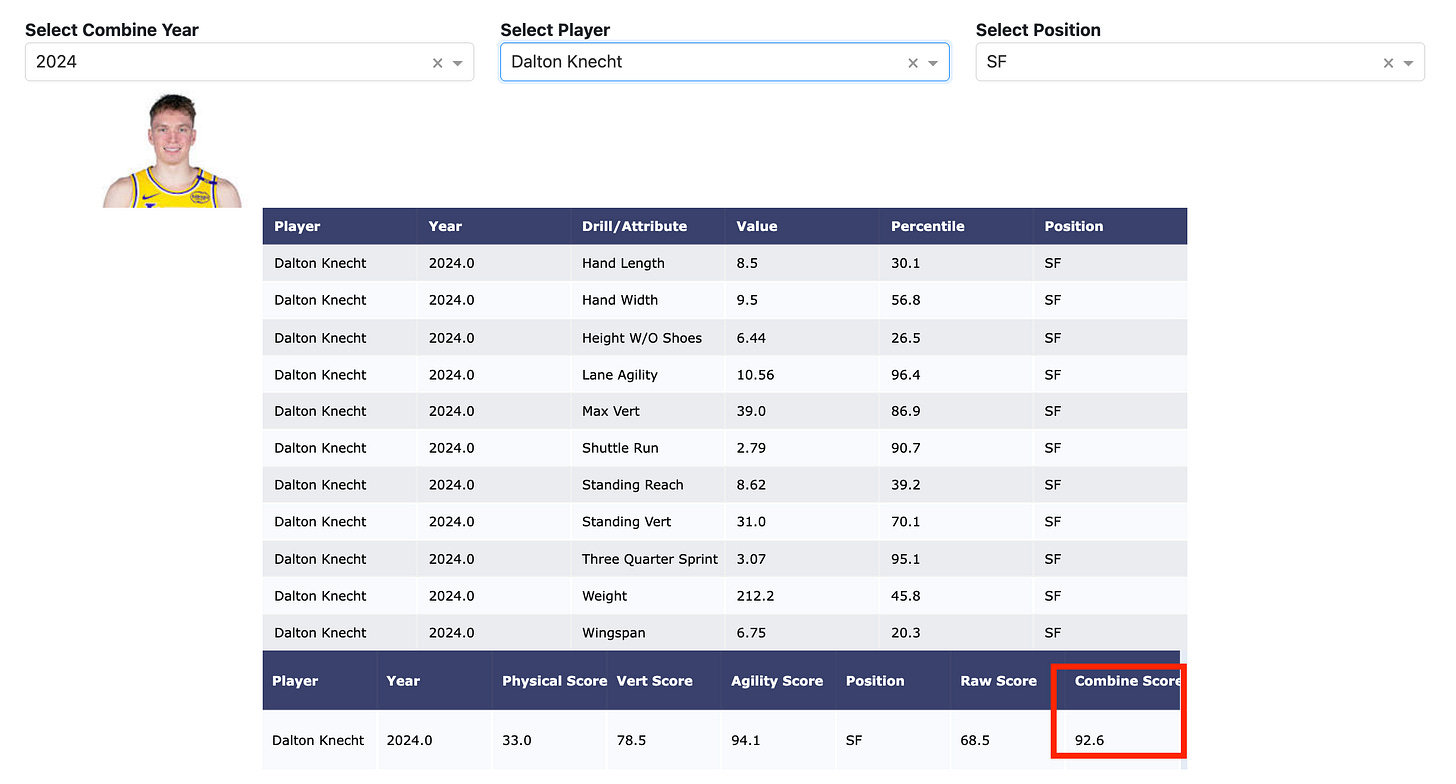

Iztok, it's correlation (that is determination coefficient) between the measure in college and nba, right? i'd imagine, the next step is to have all the stuff from the college as predictors of NBA performance (either in regression or some kind of ML).
not sure i get the excitement about knechts draft measures. if he knew how to translate his physical gifts, he would have been better defender in college. it's not unlike with o-max last year.
also, did vando really have 20% offensive rebs rate?
v informative for somebody who doesnt follow college and draft in general. thanks.